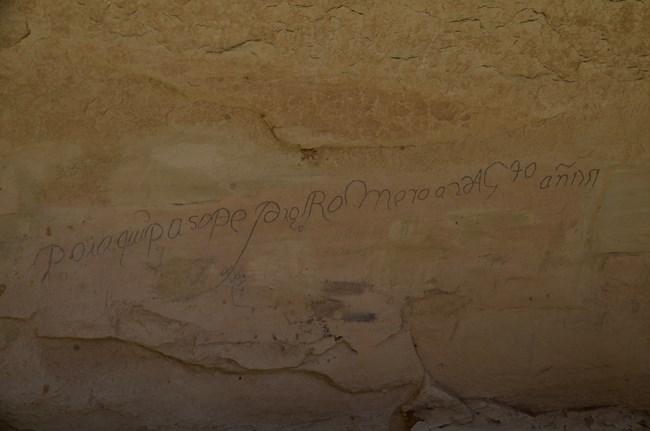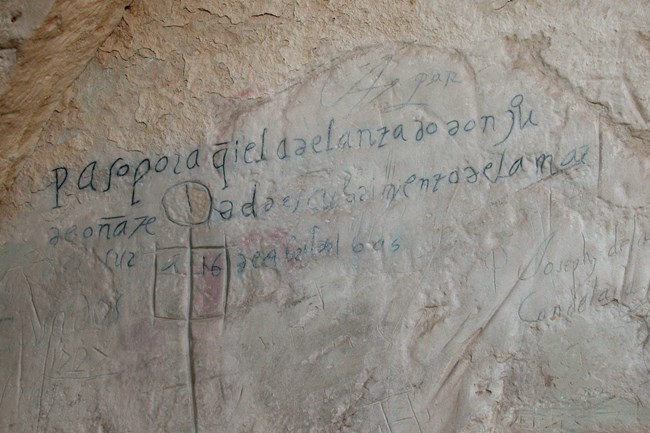
NPS Photo/J. Ellis New World ColonizersThe second generation of conquistadors pursued a myth of golden cities in a place called Cibola. Stories of these golden cities lead them to the northern reaches of “New Spain.” If this was Cibola, it meant a chance to relive the glories and riches of Aztec Mexico. In 1540, a Spanish expedition led by Francisco Vasquez de Coronado found Puebloan villages of simple, adobe dwellings instead of the hoped-for cities of gold. For God and StateAfter the area failed to produce the riches they sought, the Spainards took a new approach to colonizing the Southwest. The area became a destination for establishing missions to convert the Puebloans to Christianity. The Spanish believed that “saving souls” would serve both God and State. In 1583, an expedition led by explorer Antonio de Espejo was sent to the Rio Grande valley pueblos in search of two Franciscan priests. After confirming that the preists had been killed, Espejo headed westward toward Zuni. On March 11, 1583, he recorded his stop at a place he called El Estanque de Penol (pool at the great rock), the first historical record of El Morro. 
NPS Photo The First GovernorIn 1598, Don Juan de Onate founded the first European colony in New Mexico, becoming the territories first governor. He led many Spanish expeditions into the Great Plains and down the Colorado River in search of the fabled gold cities. On April 16th, 1605, his name was inscribed at El Morro as he was returning from the “discovery of the South Sea.” This marked the first known European inscription on the rock. Over time, other Spanish inscriptions were added as governors, soldiers, and priests passed by El Morro on their way to the western pueblos. The Pueblo RevoltThe western pueblos' distance from Santa Fe helped buffer the impact of Spain's religious and secular controls. Nonetheless, years of resentment began to boil over. As a result, in 1680, Puebloans united in a revolt that forced the Spanish out of New Mexico. The Puebloans remained free of Spanish rule for 12 years in the only successful Indigenous revolt in North America. In 1692, the territory again fell under Spanish control after the reconquest by Governor Deigo de Vargas. After the reconquest, de Vargas passed through the El Morro valley and left his inscription on the rock. By the end of the 18th century, neither Church nor State showed much interest in the isolated territory. Increased warfare with the Navajo, Apache, Ute, and Comanche was part of the reason for the change. As a result, few Spanish travelers passed by El Morro during this period. In 1821, the territory fell under Mexican rule, who devoted energy to war with the Navajo in the north. Explore More on Spanish Colonization |
Last updated: November 20, 2023
